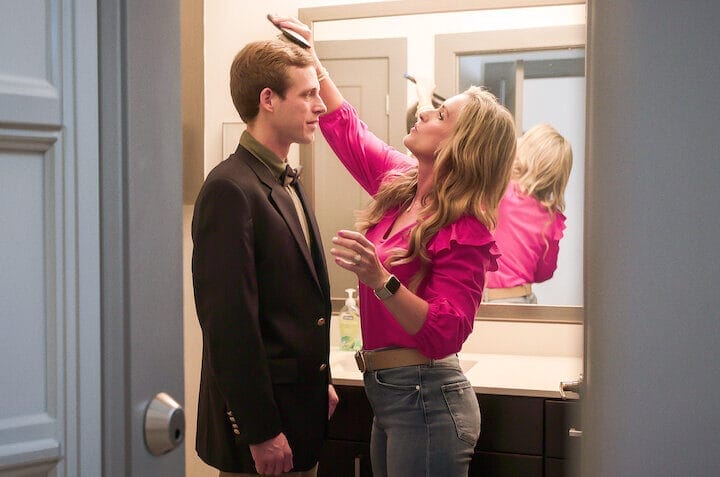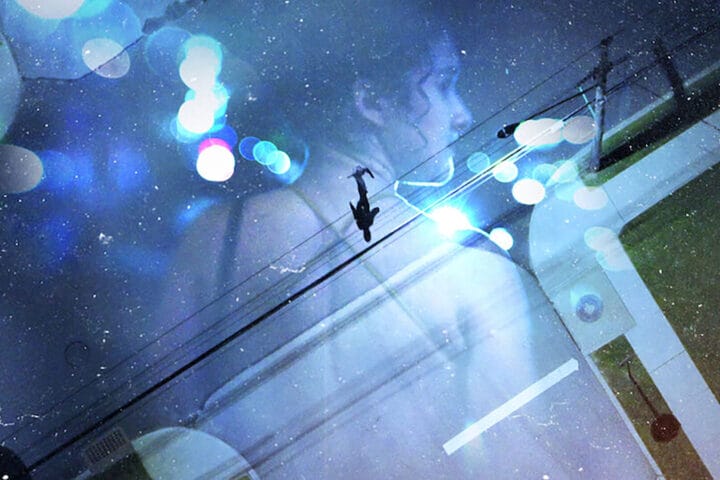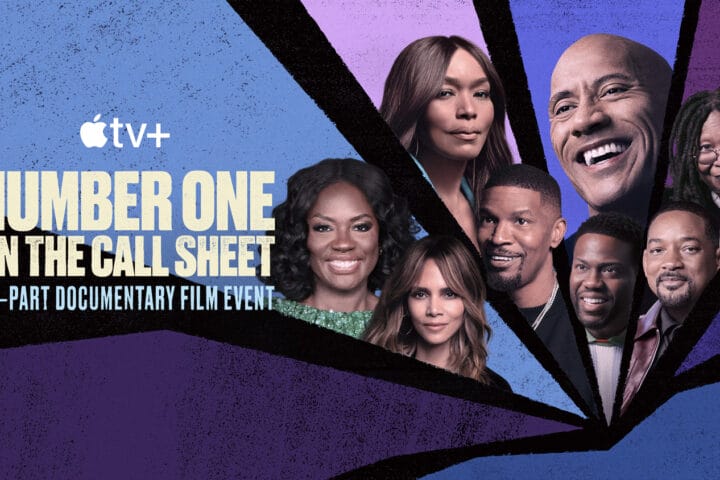NEW YORK – A new documentary film, Taking Venice, uncovers the true story behind rumors that the 1964 Venice Biennale was rigged – by the U.S. Government and a team of highly placed insiders – so that their chosen artist, Robert Rauschenberg, could win the grand prize. Directed by Amei Wallach, Taking Venice, a Zeitgeist Films release in association with Kino Lorber, will begin its national release on May 17, 2024, at IFC Center in New York City and on May 24, 2024, at Laemmle Theaters in Los Angeles.
With the pacing of a caper, the film weaves a tale of suspense, intrigue, down and dirty politics, and conspiracy theories against the backdrop of glamorous parties, passionate debates about art, and, of course, the art itself. American Pop art was about to explode on the international scene with a dynamic exhibition that was bound to be questioned.
Taking Venice unfolds at the height of the Cold War when the U.S. government was determined to fight Communism with culture. The Venice Biennale, the world’s most influential art exhibition, became a proving ground. Alice Denney, a Washington insider and a friend of the Kennedys, recommended Alan Solomon, an ambitious curator making waves with trailblazing art, to organize the U.S. entry. Together with Leo Castelli, the powerful New York art dealer, they embarked on a daring plan to make Robert Rauschenberg the winner of the Grand Prize. Although he had the potential to dazzle, Robert Rauschenberg was yet to be taken seriously by the art establishment in the early 1960s. His groundbreaking work known as “combines” merged painting and sculpture with found objects and pop culture images in new ways that had not been seen before. Deftly pulling off maneuvers that could have been written by Hollywood, the American team left the international press crying foul and Rauschenberg questioning the politics of the nationalism that sent him there.
Taking Venice received critical acclaim in 2023 at the Rome International Film Festival, Sao Paulo International Film Festival, DOC NYC, and Fort Lauderdale International Film Festival. Venues in 2024 include the Sun and Stars International Film Festival in West Palm Beach, Boulder International Film Festival, and Sonoma International Film Festival.
Taking Venice explores the impact in Europe of a tumultuous cultural shift that fixed the art world’s gaze on contemporary American art with New York as its epicenter. On screen, The New Yorker writer and author Calvin Tomkins, who covered the 1964 Biennale, Alice Denney, who helped engineer the U.S. shenanigans, and the artist Christo recall the audacious events. And, in a rare and intimate interview, Jasper Johns recounts his relationship with Robert Rauschenberg in art and life. Through a rich trove of archival footage and interviews with leading artists, curators, and critics filmed in New York, London, and at the Venice Biennale, Wallach embeds the art in world events.
“This film tells the story of the 1964 Venice Biennale at a time when State Department officials and a team of unlikely co-conspirators were joined in their conviction that American democracy was worth the fight. They were determined to harness the audacity of American art to promote what was best about democracy,” said Amei Wallach, Taking Venice’s director. “There are moments in the film that sting with what we have lost and moments that encapsulate what we have gained. The stakes are even higher now than they were at the scandal-drenched Biennale, as artists everywhere try to create a way forward. My goal is to make films about art that leap out of the art world and into a reckoning with what’s relevant in our lives though the stories that they tell.”
Wallach met Rauschenberg on a number of occasions in New York and at his studio in Captiva, Florida, beginning in the late 1970s, through her work as a journalist for Newsday, Smithsonian magazine, and The MacNeil/Lehrer NewsHour.
Taking Venice illustrates how Rauschenberg’s seminal art developed, explores the art scene that produced it, chronicles its enduring influence on artists today, and looks at art by other legendary American artists who showed in Venice that year: among them James Rosenquist, Roy Lichtenstein, Frank Stella, Jim Dine, Claes Oldenburg, and John Chamberlain.
Featured interviews with artists include Mark Bradford, who represented the U.S. in Venice in 2017; the leading Italian artist Michelangelo Pistoletto; Carolee Schneeman, who received a lifetime achievement award in Venice; and Shirin Neshat. Christine Macel, the director of the 2017 Venice Biennale; Robert Storr, director of the 2007 Biennale; Pulitzer Prize winning cultural historian Louis Menand; and the art historian Irving Sandler also offer perspectives on the history of the Biennale as well as related world events. The film ends in 2022, the year that artist Simone Leigh, the first Black woman to represent the U.S. at the Venice Biennale, transformed the American Pavilion to critical acclaim.
Background on Rauschenberg and the Venice Biennale
Rauschenberg encountered rancor, accusations, and name-calling at the 1964 Biennale. There was a last-minute addition of an American to the jury, not to mention the hurried transport by barge of Rauschenberg’s massive paintings from an exhibition at the former American Consulate on the Grand Canal to the official Biennale site. The convenient timing – the night before the jury’s decision – of a triumphant Merce Cunningham Dance Company performance with lighting, sets, and costumes by Rauschenberg, and music by John Cage, was seen as a ploy to boost the artist’s visibility. This added to the suspicion that Americans were once again guilty of uncouth antics on yet another playing field: the international art world. The accusation that a new breed of American art dealers, Leo Castelli and his ex-wife, Ileana Sonnabend, was conspiring in New York and Paris to manipulate the art market further developed into a toxic anti-American expansionism brew in this tense moment at the height of the Cold War.
About Robert Rauschenberg
Challenging painterly traditions, Robert Rauschenberg (1925-2008) worked in an extraordinary range of subjects and styles, often using non-traditional materials and techniques. He trailblazed the embrace of technology and has been called a forerunner of every postwar movement since Abstract Expressionism. Playing a game-changing role, he created what he called “combines” out of such materials as a goat, a tire, a stuffed eagle found on the street, or a bed quilt. “Painting relates to both art and life. I act in the gap between them,” he famously said. In a spirit of collaboration across the arts, Rauschenberg would sometimes make a painting on stage or a sculpture out of whatever he could find wherever he was. He’d dance in roller skates wearing a parachute. Rauschenberg’s lifelong commitment to collaboration further underscored his unique and expansive approach. Calvin Tomkins among many others has called Rauschenberg “one of the most inventive and influential artists of his generation.”
About Amei Wallach, Director and Producer
Director Amei Wallach’s 2008 film Louise Bourgeois: The Spider, The Mistress and The Tangerine, 2008, with the late Marion Cajori, is still in wide international circulation as is her 2013 film Ilya and Emilia Kabakov: Enter Here. Wallach is an award-winning art critic, journalist, and curator. Her articles have appeared in such publications as The New York Times, The Nation, Smithsonian, New York magazine, Vanity Fair, Vogue, Architectural Digest, Art in America, and ARTnews. She was chief art critic for New York Newsday and on-air arts commentator for The MacNeil/Lehrer NewsHour. She has written or contributed to a dozen books. She is available for interviews.
Taking Venice – Documentary by Amei Wallach

Photograph: Shunk-Kender © J. Paul Getty Trust. Getty Research Institute









